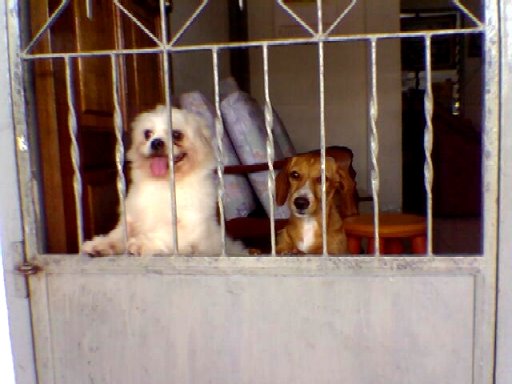South Korean Animal Welfare Movement

The development of South Korea in the late 20th century is often said to have been an “economic miracle.” Devastated by the Korean War (1950-53)—whose continuing legacy is a peninsula still divided into two countries—the Republic of Korea faced a long uphill battle to reach its current status as a player on the world stage. After years of political upheaval and great sacrifices on the part of its people, South Korea succeeded in transforming itself into a highly urbanized, sophisticated, and technologically forward nation.
Like many Asian countries, Korea has not traditionally had quite the same concept of animal welfare as now prevails in the West (however little or however much Westerners may actually put those sensibilities into practice). This is understandable, as many Asian nations do not enjoy, or have not historically enjoyed, the same general level of economic and political stability that many Western countries have, and concerns over human survival have often taken priority. Still, the idea of respect for the environment and for animals does have ancient roots in Korean culture. The Jindo breed, a spitz-type dog native to the island of the same name, is even cherished as a national symbol and designated by the government as an official “Natural Treasure.”
But in today’s affluent South Korea, a paradox exists. Although many people today keep dogs as pets, and Korean dog owners dote upon and love their companion animals, there is in general little priority given to the compassionate treatment of animals, and the country is still the home of a dog-meat industry that, though prohibited by law since 1991, makes billions of dollars every year.
Some dogs are pets, but others are “food”
According to the nonprofit organization International Aid for Korean Animals (IAKA), founded in 1997 by Korean-born artist Kyenan Kum, millions of dogs and thousands of cats are slaughtered each year and consumed as meat or in the form of tonics for their purported health benefits. These benefits, such as increased “virility” and “vitality,” have been shown scientifically to be nonexistent. Proponents of the dog-meat trade encourage the idea that the consumption of dog meat is a longstanding Korean tradition. In fact, however, the practice was until recently a fairly obscure one that was engaged in primarily out of desperate hunger during periods of famine, such as the one that followed the Korean War.
Like people in many other cultures, Koreans have a fondness for dogs. So in order to assuage people’s discomfort with eating dogs and thereby allow the dog-meat trade to grow, those who profit from it have encouraged the creation of a spurious distinction between so-called “pet” dogs and those raised for meat. The meat of large, gentle yellow dogs is promoted as particularly healthful. It is also said that the more painful the dog’s death, the better the taste and the more potent the benefits, because of the adrenaline released in the dog’s system. Even with the supposed separation between “pet” and “meat” animals, however, the meat markets still deal in dogs of all breeds. Pugs, pointers, cocker spaniels, Jack Russell terriers, and various small, fluffy dogs have all been photographed in cages, for sale at meat markets. Although they were obviously bred to be companion animals, these dogs were probably lost or abandoned by their owners or kidnapped by exploiters.
Other animals, including cats, are touted as the source of medicinal tonics and fraudulent “cures” for ailments such as rheumatism and arthritis. IAKA says, “Dramatic distortions of Korean culture [have promoted] all kinds of new animal products in Korea based on unchecked exploitation of Korea’s animals and environment.” Popular and expensive so-called “herbal” medicines are made from parts of bears, deer, tigers, rhinoceroses, and other animals.
Cats in particular have a difficult time of it in Korea. They are traditionally viewed with fear and suspicion, or at least with no particular affection. They are often considered a nuisance—deceptive, wily animals who carry disease. As such, bad treatment and outright abuse of cats can seem morally justifiable to people. The eradication of stray cat populations, according to IAKA, is attempted “not by humane methods, but rather by beating the animals to death in sacks or, in some case, boiling them alive in large pressure cookers” to be made into tonics.
Precarious legal protection
Although they are raised, slaughtered, and consumed, dogs and cats are not classified as livestock animals in South Korea; they are protected under the Korea Animal Protection Law, which was revised and strengthened in 2007 (effective Jan. 1, 2008). The new law is meant to reinforce the government’s responsibility toward animal protection, provide grounds for the enforcement of the animal registration system (which helps stem the tide of companion-animal abandonment and overpopulation), and help implement existing laws against animal abuse, among other aims. However, enforcing the law is difficult because of the lack of public interest in the issue and because of entrenched interests on the part of business and the government. Further, both before and after the new law took effect, local governments such as that of Seoul, the capital, have sought to establish hygiene standards for dog-meat restaurants. The government rationale is that, if people are eating dogs anyway, it makes sense for public health to make sure these restaurants are hygienic. But, according to the Korean Animal Protection Society (KAPS), such a move would establish dog meat as a food on an equal footing with any other and legitimize the eating of companion animals.
Organizations working for animal welfare in South Korea
There are few animal welfare organizations or animal shelters in South Korea, but those that do exist are working hard to educate the public. IAKA makes efforts to teach people, particularly schoolchildren, about the cruelty of the dog-meat and animal-medicine trades. They also spread the message that cats are friendly, clean animals who make great pets, especially for urban and apartment dwellers. Another way in which IAKA advocates for animals is through its sister organization, the Seoul-based Korea Animal Protection and Education Society (KAPES), which is educating the public on adoption, the need to spay and neuter companion animals, and proper pet care practices. KAPES is only the third such organization officially registered in Korea. It is campaigning to raise enough money to build an adoption and education center in Seoul that would be one of the first of its kind.
California-based In Defense of Animals (IDA) works with its allies in South Korea to educate the public, stage protests, rescue dogs from abusive conditions on dog “farms,” and urge the government to enforce existing animal protection laws. The grassroots organization Animal Rescue Korea (ARK) is an online community started by a Canadian animal lover who was living in Korea and teaching English. ARK now provides many online resources for Koreans and foreigners living in Korea who want to improve the welfare of animals: discussion forums, animal fostering, listings of adoptable animals, and articles on animal care and related topics. The Korean Animal Protection Society (KAPS) advocates against the raising, slaughtering, and consumption of dogs and has lobbied governmental bodies against the promotion of the practice. It also runs two sanctuaries for rescued animals and an adoption shelter.
The efforts of all these organizations in establishing a Korean animal welfare movement are admirable. It is to be hoped that their work in humane education with the people of South Korea will promote greater compassion for animals, a wider understanding of the needs of companion animals, and an end to the demand for dog meat and animal-based medicine.
Images: Dogs in cages at market; dogs in truck going to market; cat and kittens for sale; Korean baby with yellow dog—all courtesy In Defense of Animals.
Article Source: Britannica.com











0 comments:
Post a Comment